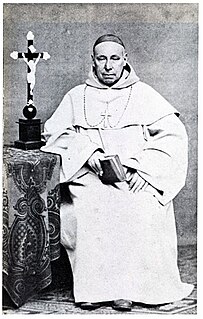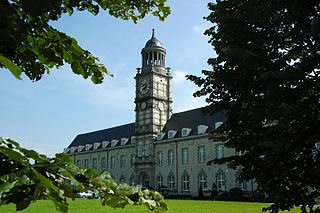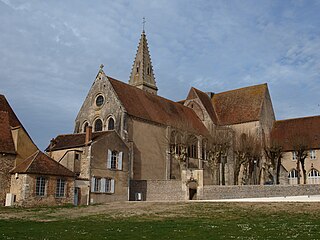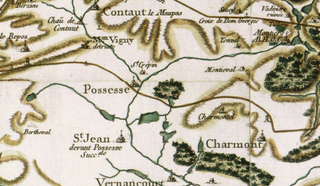
Malle is a municipality located in the Campine region of the Belgian province of Antwerp. The municipality comprises the villages of Oostmalle and Westmalle. On 1 January 2013 Malle had a total population of 14,950. The total area is 51.99 km2 which gives a population density of 288 inhabitants per km2.

Trappist beer is brewed by Trappist monks. Fourteen monasteries—six in Belgium, two in the Netherlands, and one each in Austria, Italy, England, France, Spain and the United States—currently produce Trappist beer as members of the International Trappist Association (ITA). However, the Authentic Trappist Product label is assigned by the ITA to the beer products of just eleven breweries which meet their strict criteria. As of 2021, Achel is no longer recognized as a Trappist brewery because it does not have any living monks.

Westmalle is a village in the Belgian province of Antwerp which is part of the municipality of Malle.

Achel Brewery or Brouwerij der Sint-Benedictusabdij de Achelse Kluis was a Belgian Trappist brewery, until January 2021. It continues to operate as a brewery but is no longer Trappist, as the brewing monks whose presence gave rise to that status have retired. It is located in the Abbey of Saint Benedict in the Belgian municipality of Hamont-Achel. It brews six "Trappist beers".

Westmalle Brewery is a Trappist brewery in the Westmalle Abbey, Belgium. It produces three beers, designated as Trappist beer by the International Trappist Association. Westmalle Tripel is credited with being the first golden strong pale ale to use the term Tripel.
Francis Severeyns, nicknamed Cisse, is a Belgian former professional footballer who played as a striker for Royal Antwerp, Pisa S.C., KV Mechelen, FC Tirol Innsbruck and K.F.C. Germinal Beerschot. He was the Jupiler League top scorer in 1988 with 24 goals. He played seven matches for the Belgium national team. Whilst at Antwerp he helped them to the 1993 European Cup Winners' Cup Final, in which he scored to tie the game at 1–1, although they went on to lose 3–1 to Parma.
Westmalle Abbey otherwise the Trappist Abbey of Westmalle is a monastery of the Cistercians of Strict Observance in Westmalle in the Belgian province of Antwerp.

Westmalle Castle is located in the village of Westmalle, which is part of the municipality of Malle in the Campine region of Flanders, Belgium. Westmalle Castle is situated at an elevation of 29 meters.

Dom Martinus Dom, O.C.R., was a Belgian Trappist monk. He served as the first abbot of the Trappist Abbey of Westmalle, where he founded the Westmalle Brewery.

Saint-Sixtus Abbey of Westvleteren, which belongs to the Cistercians of Strict Observance, or Trappists, is a Roman Catholic abbey located in Westvleteren, in the Belgian Province of West Flanders. The abbey is famous for its spiritual life, characterised by prayer, reading, and manual work, the three basic elements of Trappist life. It has also a reputation for its brewery, one of several producers of Trappist beer in Belgium.

The Trappist Abbey of Achel or Saint Benedictus-Abbey or Achelse Kluis, which belongs to the Cistercians of Strict Observance, is located in Achel in the Campine region of the province of Limburg. The abbey was famous for its spiritual life and its brewery, which was one of only a few Trappist beer breweries in the world. Life in the abbey was characterised by prayer, reading and manual work, the three basic elements of Trappist life. The monastic community came to an end in January 2021, with the last two monks moving to Westmalle Abbey.

Scourmont Abbey is a Trappist monastery on the Scourmont plateau, in the village of Forges which is part of Chimay in the province of Hainaut, Belgium. The abbey is famous for its spiritual life and for running the Chimay Brewery, one of the few producers of Trappist beer.

Brecht Abbey, also known as the Abbey of Our Lady of Nazareth, is an abbey of Trappistine nuns located in Brecht, in the Campine region of the province of Antwerp. Life in the abbey is characterized by prayer, reading and manual work, the three basic elements of Trappist life.

St. Bernard's Abbey, Hemiksem, or abbatiae S. Bernardi ad Scaldim, ordinis Cisterciensis, in dioecesi Antverpiensi also known as St. Bernard's Abbey on the Scheldt, located in Hemiksem in the province of Antwerp in Belgium, was a Cistercian monastery founded in 1243 and dissolved during the French Revolution. The buildings are now the property of the municipality of Hemiksem.

Geras Abbey is a Premonstratensian monastery in Geras in Lower Austria. Since 1783, it has also owned the premises of the former Pernegg Abbey nearby.

The Order of the Annunciation of the Blessed Virgin Mary, also known as Sisters of the Annunciation or Annonciades, is an enclosed religious order of contemplative nuns founded in honor of the Annunciation in 1501 at Bourges by Joan de Valois, also known as Joan of France, daughter of King Louis XI of France, and wife of Louis, the Duke of Orléans, later King Louis XII of France.

The Notitia de servitio monasteriorum is a list of monasteries in the Frankish Empire and the services they owned the crown. It was compiled under Emperor Louis the Pious in 819, probably as a summation of the royal reform of the monasteries carried out following the councils of 816 and 817. It is not a complete list of the reformed monasteries: only 82 of the 104 monasteries known to have adopted the reforms are listed in the Notitia.

Marc Dessauvage (1931–1984) was a Belgian ecclesiastical architect, active primarily in the 1960s and 1970s. He broke with traditional church architecture to produce modernist buildings that were thought to give expression to the liturgical reforms of the time. In 1959 he won a Pro Arte Christiana design competition, drawing further praise from the Jesuit art theorist Geert Bekaert and the Benedictine liturgist Frédéric Debuyst, which launched him on a 20-year career. His growing deafness made communication with clients problematic. One of his most prestigious designs was for the Faculty of Arts of the Katholieke Universiteit Leuven (1971–72).

The Abbey of Monthiers-en-Argonne was a Cistercian monastery located in Possesse in the diocese of Châlons-sur-Marne in the County of Champagne. A daughter house of Trois-Fontaines and of the lineage of Clairvaux, it was dedicated to Saints Nicholas and Mary (Notre-Dame). According to Leopold Janauschek, its order number was 194.
Ulingsheide Abbey was a Trappist monastery in Tegelen, Venlo, the Netherlands, very close to the Dutch border with Germany. It was founded in 1884 as a daughter house of Westmalle Abbey in Belgium, to receive German novices in the wake of the Kulturkampf. The community was merged to that of Lilbosch Abbey in 2002, the house becoming an annex of Lilbosch. As of summer 2020 negotiations were ongoing for the sale of the property to developers.